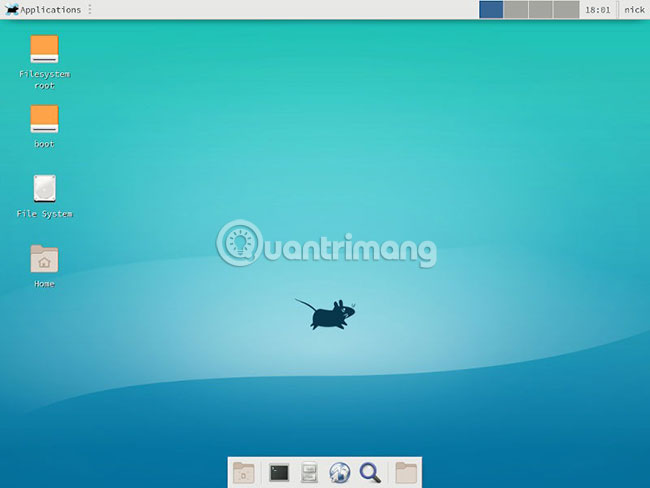How to set up XFCE desktop environment on Arch Linux
You have just installed Arch, started your new system, and have a black terminal screen. Unless you are familiar with Arch or want to find a way to set up a server, this can be a bit annoying. Don't worry, there is a way to fix this problem.
The default Arch settings do not come with a graphical desktop because Arch gives you the ability to choose. If you're new to this or looking for a suggestion, XFCE is a great place to start. XFCE is a Linux desktop that uses less resources while still providing a complete desktop experience. You do not have to spend much effort to set up and run XFCE on Arch.
Install the driver
Before doing anything, you will need to find the right driver for the graphics card. There are no exceptions, even if you use Intel integrated graphics. Arch does not include any graphics driver in the base installation.
Intel
sudo pacman -S xf86-video-intel mesa AMD
sudo pacman -S xf86-video-amdgpu mesa NVIDIA
sudo pacman -S nvidia nvidia-utils Install Xorg

The next thing you need is an Xorg server. All graphics applications, including the desktop environment, are built on Xorg. The Xorg package for Arch is a meta package (large software package that includes everything you will need for Xorg). So, install this package and Arch will set it all up.
sudo pacman -S xorg Pacman will show you a large list of packages before installing. Press Enter to install it all unless you know specifically what you're looking for.
If you prefer a simpler installation, you can only select the Xorg server. Please note that you may lack dependencies later on, depending on what you want to set up.
sudo pacman -S xorg-server Install XFCE
Just like with Xorg, the desktop environment on Arch has meta packages. Desktop environments can be very large and contain hundreds of such packages. XFCE is a smaller environment and doesn't require as many packages as GNOME or Plasma, but it will still take a few minutes to install.

You can only install the meta package XFCE, but the additional goodies package also contains a lot of useful desktop utilities, so you should install it.
sudo pacman -S xfce4 xfce4-goodies Like with Xorg, Pacman will require which package group to install. Press Enter both times to install all. Be patient and let Arch set up everything.
Set up display manager
Right now, you can start your XFCE desktop from the command line, but the next time you start your computer, you'll be right back on that terminal screen. That's because you don't have a Display Manager. The display manager is responsible for the login screen that appears after starting the computer.
First, if you want to try XFCE, do this with the command:
startxfce4 
Now, open a new terminal or continue working in the current terminal. This tutorial will use LightDM as the display manager. Most distributions pair it with XFCE because it is lightweight and not associated with any desktop environment. Install LightDM with the following command:
sudo pacman -S lightdm lightdm-gtk-greeter 
The display manager is a service, so enable LightDM on startup.
sudo systemctl enable lightdm 
When finished, you can restart your computer. You will see the first LightDM login window. Log in to the user account and you will come to the new XFCE desktop. Arch does not change your settings or configuration, so this setting will remain the same until you change something. Don't forget to check out some of the best XFCE themes you can install on your computer.
Hope you are succesful.
 These Linux distros are used in IoT devices
These Linux distros are used in IoT devices How to enable Dynamic Transparency on Ubuntu
How to enable Dynamic Transparency on Ubuntu How to fix the touchpad doesn't work in Linux
How to fix the touchpad doesn't work in Linux 8 best open source NAS operating systems for Linux
8 best open source NAS operating systems for Linux How to install Arduino IDE in Ubuntu
How to install Arduino IDE in Ubuntu How to secure Linux Home Server
How to secure Linux Home Server